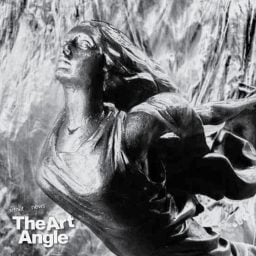By now, the artist and photographer Petra Collins’s name has become shorthand for a distinctive aesthetic. It might be used aspirationally, or derisively—the vibe you want for your ad campaign, the comparison you want to avoid at your undergrad photo crit. It has come to mean soft, dreamy focus; hazy, colored lighting; windows, phones, mirrors; glitter, flowers, lingerie. It is intimate but somehow surreal. It is nostalgic while still feelinng young. It is positively addictive, and has inspired a legion of imitators—but none who can keep up with her broadening vision.
Collins is now lending her eye to “The Goddess,” a collaboration between Cadillac and Artnet that is being unveiled today on Artnet Auctions, alongside works by Ming Smith and Dannielle Bowman. Each photographer was asked to present a vision of a contemporary goddess after the ornament that adorns Cadillac’s new ultra-luxury EV, CELESTIQ.
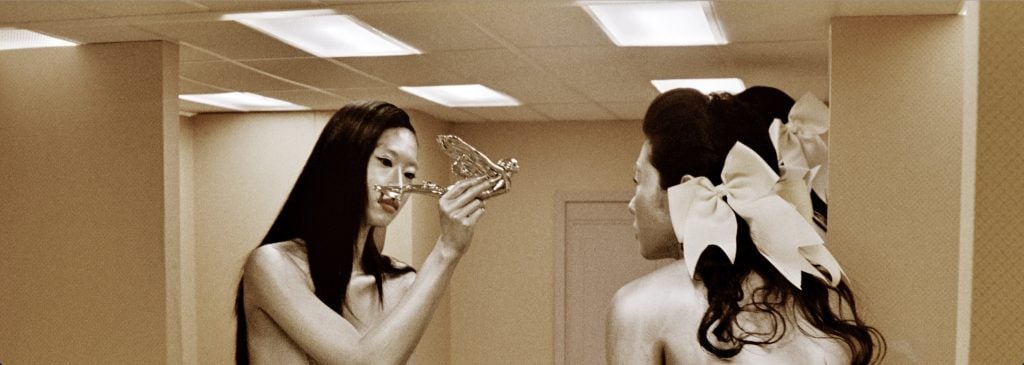
Petra Collins, Backrooms (2023). Courtesy of Cadillac.
Collins is 30, but has been producing work for 15 years. She continues to experiment with transformation, objectification, and surrealism. The images are surprisingly personal. “This shoot breathed some new life into me, and I was able to work with themes that have been sitting in my mind for a while,” she said. “Working with Cadillac on this was interesting because their car played a massive part in my childhood.”
She continued, “I grew up with Cadillac. It was my family’s prize possession, but it was also my safe space. Even when my home life crumbled, I could still get into that car and feel like we had something.”
In one photo, her interpretation of the brand’s 1933 “Chrome Goddess,” her deities appear cold but beguiling, powerful but youthful. The icy chrome of their complexions is striking against the soft peach of a typical midcentury work environment. Their heads scrape the ceiling; either they’re giants or they’re in a dollhouse. Alien and ambiguous, uninterested in our gaze, the goddesses play.
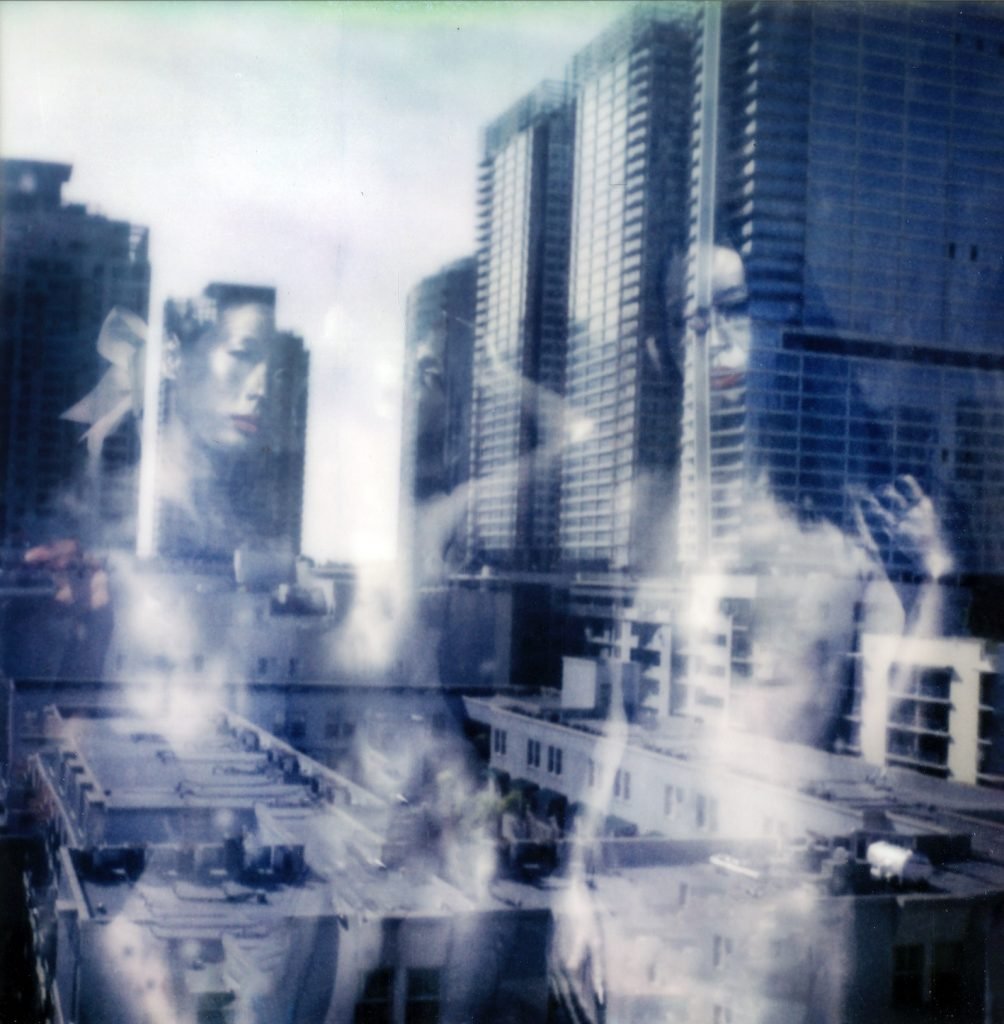
Petra Collins, Goddess (Reflections) (2023). Courtesy of Cadillac.
In another, silver-skinned goddesses are refracted through glass. A cityscape rises around them, through them, with neither the figures nor the environment fully taking precedence. Each distorts the other. The goddesses could almost be the city. Whether the glass is a mirror or a window, the women seem to check themselves. They wear fishnets and bows in their hair. They are self-conscious, self-aware. Preening and statuesque.
In Collins’s interpretation, a goddess is impossible to separate from the society that birthed her. “In this series of works, I depict goddesses roaming freely through these timeless spaces—as if they have always been there and will remain so forever,” she says. “Through their movements, I aimed to capture a sense of freedom that transcends any physical boundaries or limitations imposed on them by society or circumstance. I hope viewers can relate to this feeling of liberation within each piece.”

Petra Collins, Cityscape (2023). Courtesy of Cadillac.
Collins first rose to prominence in Toronto in the early 2010s as a teenage photographer making lo-fi images of her little sister’s friends. She shot editorials for Rookie, Tavi Gevinson’s influential online magazine. Very quickly, Collins developed a practice that straddled and blurred art and commerce. She looked at branded work as an opportunity for serious feminist discussion. Collins has shot ad campaigns for Gucci, Adidas, and Levi’s, and recently launched a clothing line with SSENSE—all in addition to showing work at MoMA and Miami Art Basel and publishing a number of photo books. The ethereal, nostalgic, world-building aesthetic that she created has become one of the dominant modes of visual culture. Her influence is widespread; it’s hard to imagine a TV show like Euphoria or a musician like Olivia Rodrigo without her. (In fact she has worked extensively with Rodrigo, including directing the music video for the hit single “good 4 u.”)
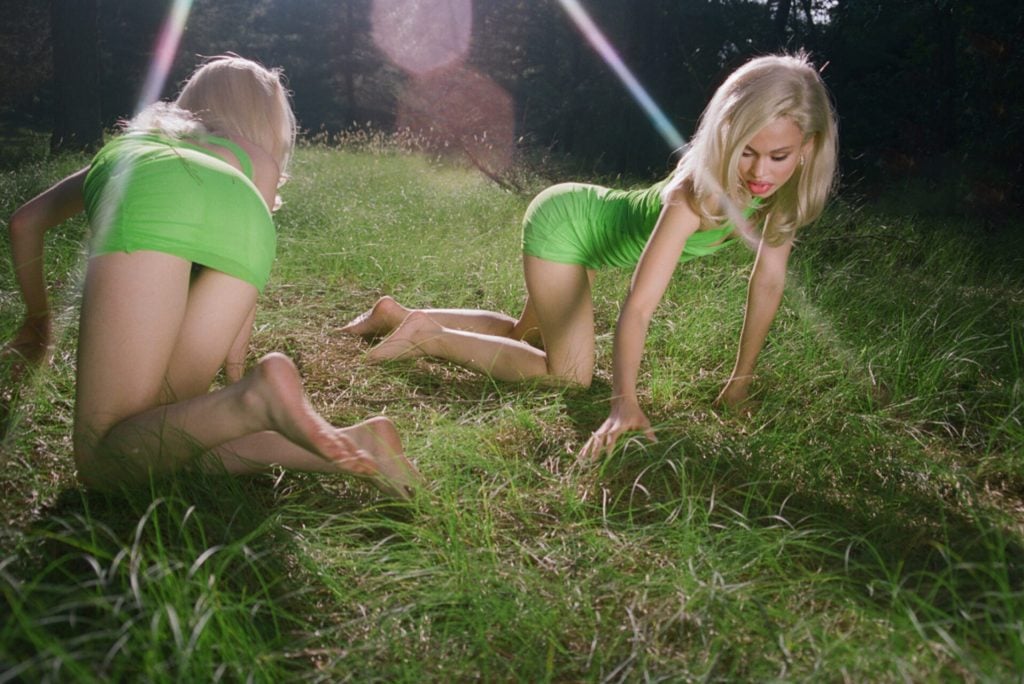
A 2019 image from Petra Collins’s “OMG I’m Being Killed” series. Courtesy of the artist.
Collins’s early work was immediately read as an intimate, authentic exploration of girlhood, even though the photographs themselves—prop- and makeup-heavy, expressively lit images of cheerleaders, goths, girls getting ready for dances or else lurking in suburban graveyards—were highly constructed. It is hard to overstate the influence this work had on a particular microgeneration of women. The great cultural intervention that Collins made was to convince teenage girls they could be preemptively nostalgic for their lives; they could go ahead and romanticize what they knew they would one day look back on.
What makes Collins’s work interesting isn’t intimacy or authenticity, but rather how she imitates both while keeping her distance. There’s a suggestive tilt to many of Collins’s photographs that belies their supposed innocence; these are images of young women made by a young woman in which all parties are cynically, perhaps tragically, aware of their own objectification. At 16, Collins was already living away from her parents, dating an older man she has described as abusive. “I was trying to create imagery of a reality that I wished I lived in, which was this teen world that was a little dark, but it was still teen. I wanted to be a teenager so badly,” she has said.
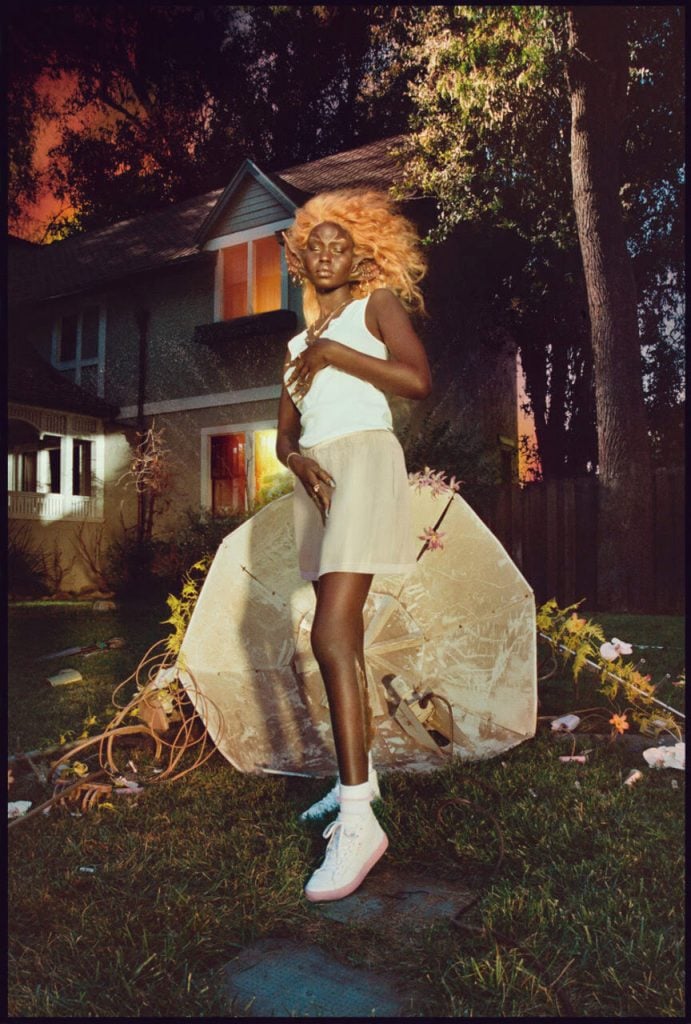
A 2019 image from Petra Collins’s “OMG I’m Being Killed” series. Courtesy of the artist.
Collins’s recent work has taken a harder edge. The focus is sharper, the lighting is harsher, and familiar subjects (women, celebrities) and spaces (bedrooms, bathrooms) have mutated, becoming stranger and more violent. In “Fairytales,” a 2021 series published as a book by Rizzoli, the actress Alexa Demie is adorned in monstrous prosthetics—elf ears, talons, dragonlike spikes down her spine—to embody what Collins calls “erotic folklore.” In 2019’s “Miért vagy te, ha lehetsz én is?” (a Hungarian phrase meaning, “Why be you, when you can be me?”), the distortion is more subtle and unsettling. Collins uses masks and prosthetics cast from her own body to create arresting, horror-inflected images. Women’s body parts are doubled, deflated, and decontextualized: a pelvis is groped, a hand is left in the snow, a mask slips to reveal a slasher smile. In one image the ubiquitous teen bedroom is set on fire.
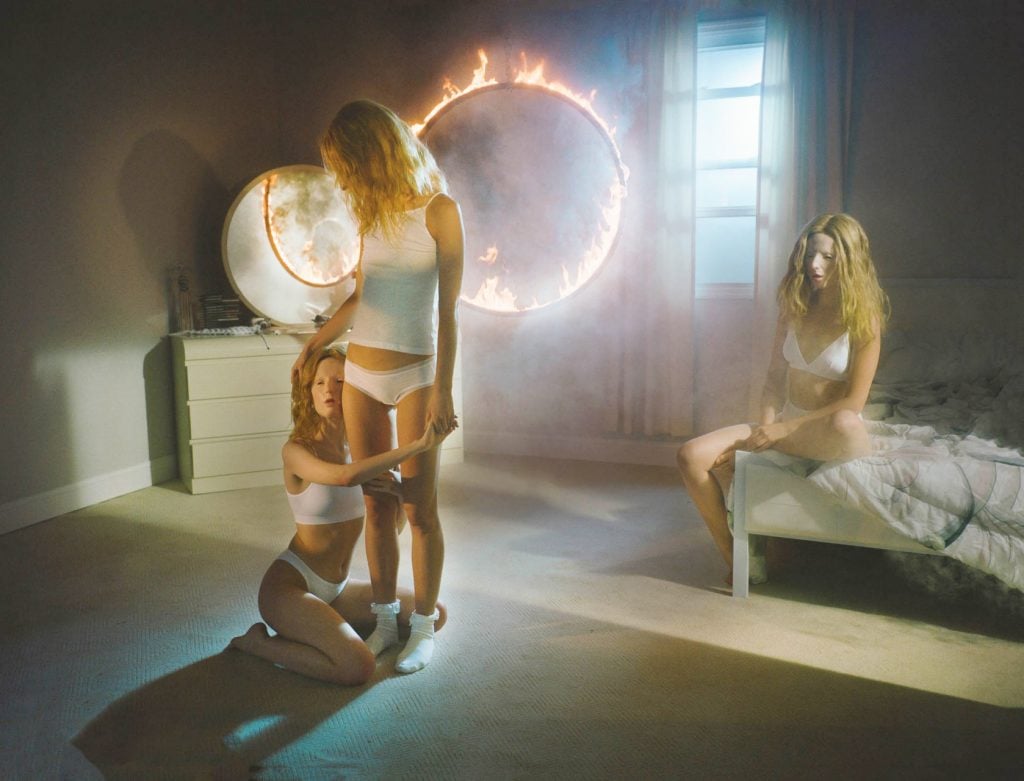
A 2020 image from Petra Collins’s “Miért vagy te, ha lehetsz én is?” series. Courtesy of the artist.
This series, which marks Collins’s first foray into self-portraiture, seems to draw on the identity-probing work of Gillian Wearing and Cindy Sherman; Collins’s interests have moved from the supposedly naïve, naturalistic world of high-school hallways and suburban backyards to something more blatantly constructed and threatening. Her collaboration with Cadillac continues this evolution: her goddesses contain an element of the monstrous, or perhaps the machine. They are young women and they are skyscrapers: gargantuan, powerful and free.
Learn more about image contributions by Ming Smith and Dannielle Bowman, and place a bid in The Goddess, commissioned by Artnet x Cadillac, now live on Artnet Auctions.









